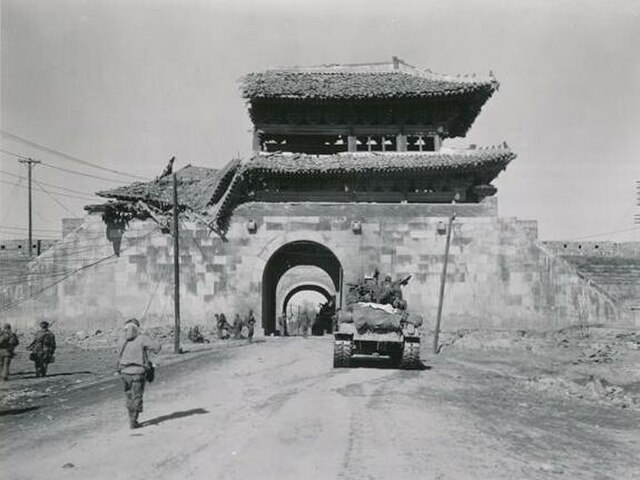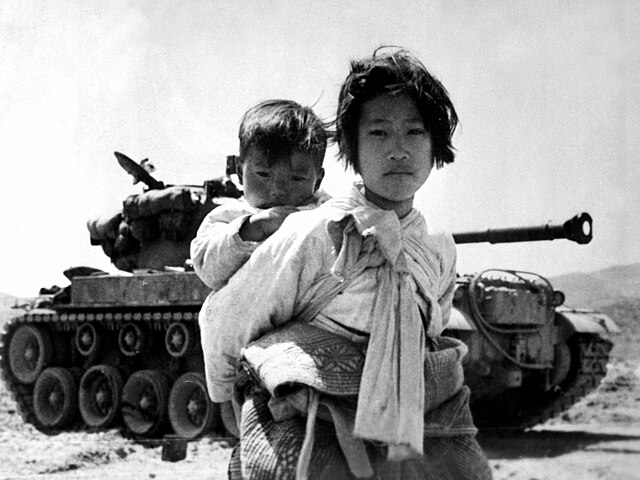Korean Armistice Agreement
The Korean Armistice Agreement is an armistice that brought about a cessation of hostilities of the Korean War. It was signed by United States Army Lieutenant General William Harrison Jr. and General Mark W. Clark representing the United Nations Command (UNC), North Korea leader Kim Il Sung and General Nam Il representing the Korean People's Army (KPA), and Peng Dehuai representing the Chinese People's Volunteer Army (PVA). The armistice was signed on 27 July 1953, and was designed to "ensure a complete cessation of hostilities and of all acts of armed force in Korea until a final peaceful settlement is achieved."
Delegates of both belligerent sides signing the Korean Armistice Agreement in Panmunjom, marking the beginning of the still-existing ceasefire between the two Koreas
Mosaic depicting Kim Il-sung and KPA generals during Korean War
The site of negotiations in 1951
The English text of Korean Armistice Agreement. Harrison's signature in the lower right corner.
The Korean War was fought between North Korea and South Korea from 1950 to 1953. It began on 25 June 1950 when North Korea invaded South Korea and ceased after an armistice on 27 July 1953. North Korea was supported by China and the Soviet Union while South Korea was supported by the United States and US-led United Nations (UN) forces.
Image: Chosin
Image: Korean War bombing Wonsan (cropped)
Image: Namdaemun, Main Southern Entrance to Seoul (cropped)
Image: Korean War Refugee With Baby (cropped)








